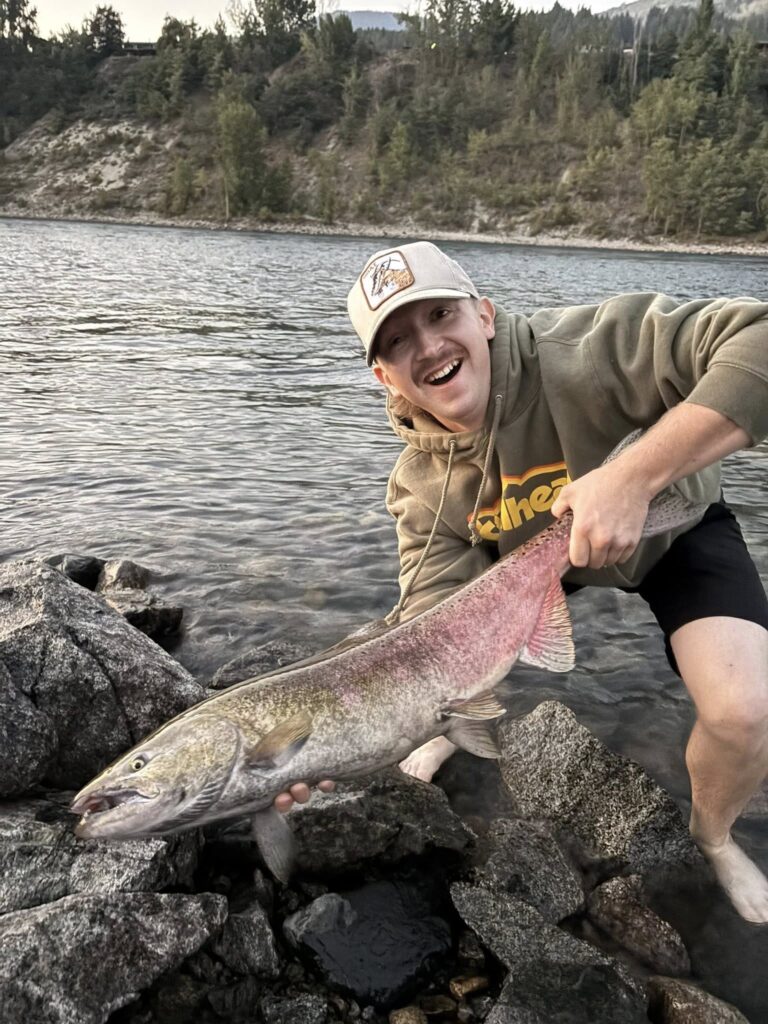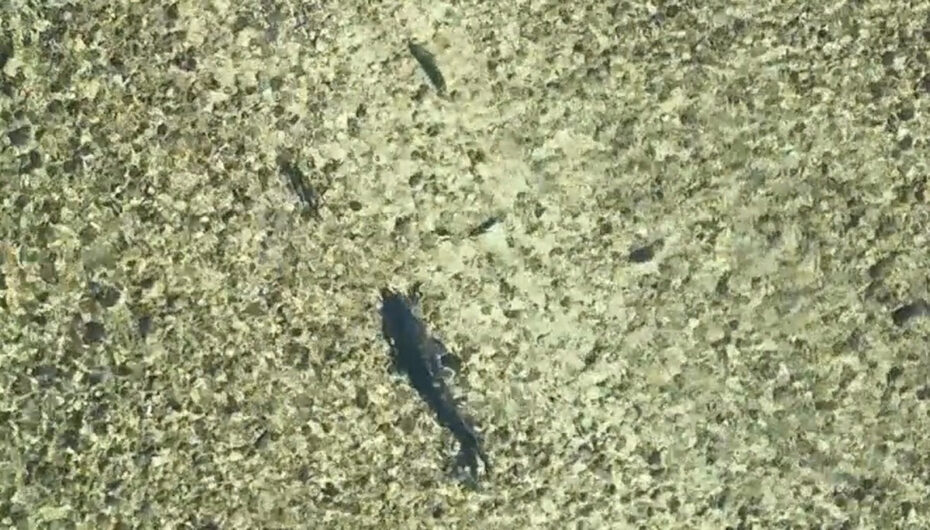For Immediate Release Contact: Neeka Somday
November 5, 2025 509-634-2213
Nelson, BC) — The Confederated Tribes of the Colville Reservation and the Sinixt Confederacy are pleased to announce the completion of the seventh year of releases of adult Chinook salmon and sockeye salmon above the Grand Coulee Dam. The releases are designed to assist salmon recovery in both the United States and Canada. This year featured the largest amount of fish released yet.
On the U.S. side of the border, an effort called the Phase 2 Implementation Plan (“P2IP”) includes releasing thousands of adult salmon and hundreds of thousands of juvenile salmon into the waters blocked by the Grand Coulee, Chief Joseph, and Spokane river dams. In 2025 over 4,500 adult salmon were released into the blocked areas, with nearly 900 released into the transboundary reach of the Columbia. This is a ten-fold increase from the first releases 7 years ago.
Tagging studies over multiple years confirm that approximately 75% of adult salmon released into the upper reaches of Lake Roosevelt migrate into Canadian waters.
Partners who assist Colville in implementing feasibility assessments for salmon reintroduction in the P2IP include the Upper Columbia United Tribes, the State of Washington, public utility districts and many federal agencies.
On the Canadian side of the border, the Sinixt Confederacy has used the tags on the migrating fish to identify spawning locations and the timing of spawning, which can inform hydroelectric operations on how best to protect salmon. The Sinixt have worked with Selkirk College in 2024 and 2025 to study migration patterns via aerial surveys of the Columbia River by drone and helicopter that count adult salmon and identify redds (nests created by female salmon to protect their eggs). After two years of work, it is known that a significant number of Chinook released above the U.S. dams are moving upstream into Canada and spawning successfully. A significant amount of salmon habitat is available upstream of the border, reaching to Hugh Keenleyside Dam and to Brilliant Dam in the Kootenay River.


It is not legal to target salmon in the Columbia River in Canada, but social media reports indicate that some anglers are catching Chinook incidentally. An angler from Taghum, B.C. who recently caught a Chinook incidentally on the Columbia River for perhaps the first time in 80 years said it “was quite an emotional experience” and praised the “awesome” restoration efforts that he is “super happy about.” If you catch a Chinook in Canada, adult or juvenile, please contact the Sinixt Confederacy office in Nelson, British Columbia at (509) 419-9804.
The Chairman of the Colville Confederated Tribes, Jarred-Michael Erickson, said, “I want to thank all of the people who collaborate with us on restoring salmon to the Upper Columbia River. In addition to the agencies mentioned above, I’d like to thank Casey Baldwin of the Colville Fish and Wildlife Program and James Baxter and Herb Alex of the Sinixt Confederacy in B.C.. A lot of people pour a lot of work into salmon reintroduction, and their efforts bring us closer each year to the time when these majestic salmon are fully restored to their complete natural habitat.”
###
About the Colville Tribes:
Today, more than 9,117 descendants of 12 aboriginal tribes of Indians are enrolled in the Confederated Tribes of the Colville. The twelve tribes which compose the Confederated Tribes of the Colville Reservation include: ščəl̕ámxəxʷ (deep water) or Chelan; wal̕wáma (Wallowa people) or Chief Joseph Band of Nez Perce; sx̌ʷyʔiɬp (sharp pointed trees) or Colville; šnt̕iyátkʷəxʷ (grass in the water) or Entiat; snʕáyckst (speckled fish) or Lakes; mətxʷu (blunt hills around a valley) or Methow; škwáxčənəxʷ (people living on the bank) or Moses-Columbia; nspilm (prairie) or Nespelem; uknaqin (seeing over the top) or Okanogan; palúšpam (people from Palouse) or Palus; sənpʕʷilx (grey mist as far as one can see) or San Poil, and šnp̓əšqʷáw̓səxʷ (people in between) or Wenatchi.
About the Sinixt:
Sinixt traditional territory stretches from as far north as the Big Bend of the Columbia River,
north of Revelstoke in what is now British Columbia, south to an island just above Kettle Falls, in
what is now Washington State. Through colonization, many Sinixt people, also known as the
people of the Arrow Lakes or the Lakes people, were gradually displaced from their traditional
territory in British Columbia and prevented from exercising their rights in Canada. As a result,
they became the Lakes Tribe or Sinixt members of the Confederated Tribes of the Colville
Reservation.
In 2021, the Supreme Court of Canada recognized that the Lakes Tribe is a modern successor
group of the historic Sinixt and continues to be an Aboriginal people of Canada despite their
displacement. The Sinixt continue to protect and maintain their relationship to their traditional
land, which they have held since time immemorial. The Sinixt are represented by both the
CTCR and the Sinixt Confederacy, an organization formed to represent the interests of Sinixt
people on both sides of the border.
To learn more please visit sinixt.com

